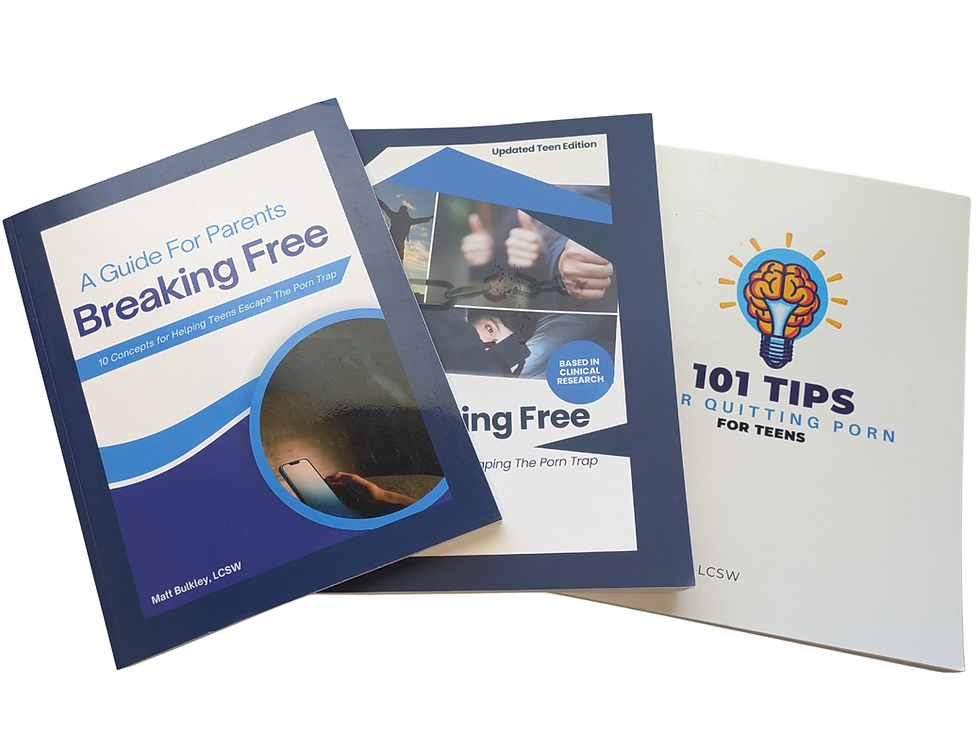How Photography and Exploration Can Help Teens Break Free from Pornography Addiction
- Matt Bulkley

- Jun 22
- 3 min read
When your teen is working to overcome a pornography addiction, one of the most powerful tools they can use isn’t hidden in an app or a program—it might be sitting right in their hands: a camera or smartphone. Taking up photography and exploring their own neighborhood can be a surprisingly effective way to support healing, personal growth, and long-term recovery.
This approach may seem simple, but it’s rooted in solid psychological principles, and both therapists and researchers are beginning to recognize its therapeutic value—especially for teens.
Getting Out of Your Head and Into the World
One of the biggest challenges of pornography addiction is that it often pulls teens inward, trapping them in patterns of disconnection, isolation, and emotional numbness. A daily habit that encourages them to look outward—like photography—can help break that cycle.
According to research published in the Journal of Behavioral Addictions, engaging with the physical world (especially through creative activities) can interrupt compulsive patterns and reduce reliance on unhealthy coping mechanisms. Therapists who work with teens say that something as simple as going for a walk to look for photo opportunities shifts the brain’s focus from obsessive thought loops to present-moment awareness.
Instead of zoning out in front of a screen, teens are learning to tune in—to colors, shapes, light, and movement. That shift can be incredibly grounding.
Tapping Into the Brain’s Reward System—In a Healthy Way
Photography is more than just distraction—it’s a creative outlet, and creativity plays a key role in rewiring the brain during addiction recovery. Studies cited in the American Journal of Psychiatry show that engaging in creative hobbies like photography activates the same brain regions involved in pleasure and motivation—the very systems often hijacked by pornography.
For teens, this means photography becomes a new source of “feel-good” energy. Whether it’s capturing a sunrise, snapping portraits of their dog, or finding beauty in everyday objects, each photo becomes a small victory—proof that joy and focus can exist outside of their addiction.
Many therapists report that teens who take up creative hobbies like photography are less likely to relapse, because they’ve found something that fulfills their need for excitement and expression in a healthy, life-affirming way.
Practicing Mindfulness and Feeling More Connected
Beyond creativity, photography also promotes mindfulness, which is a key element in many evidence-based recovery programs. Mindfulness simply means being present and fully engaged in the moment. When teens wander their neighborhood with a camera in hand, looking for hidden beauty or interesting angles, they naturally begin to slow down, observe, and connect with their surroundings.
This can lead to:
Reduced stress and anxiety, which often trigger urges to return to pornography
A greater sense of belonging and connection, even in familiar environments
Improved emotional regulation, as they become more aware of their thoughts and feelings
Research consistently shows that mindfulness-based practices can reduce cravings and improve long-term outcomes for those struggling with addiction.
How Parents Can Support This Practice
You don’t need to become a photography expert to support your teen. Instead, you can:
Encourage curiosity: Suggest they try taking a photo walk once a week or explore parts of the neighborhood they haven’t noticed before.
Celebrate their creativity: Ask to see their favorite photo from the week, or let them display their shots around the house.
Provide simple tools: Even an old smartphone with a decent camera is enough to get started.
Model the habit: Take photos together as a way to bond and explore your community.
Final Thoughts: A Simple, Empowering Shift
Photography might seem like a hobby—but for a teen in recovery, it can be a lifeline. It draws them out of harmful habits and into a mindset of observation, presence, and creativity. It teaches them to see their world—and themselves—with fresh eyes.
By supporting this practice, you're helping your teen build resilience, reduce stress, and discover a healthy new way to engage with life. One photo at a time.










Comments